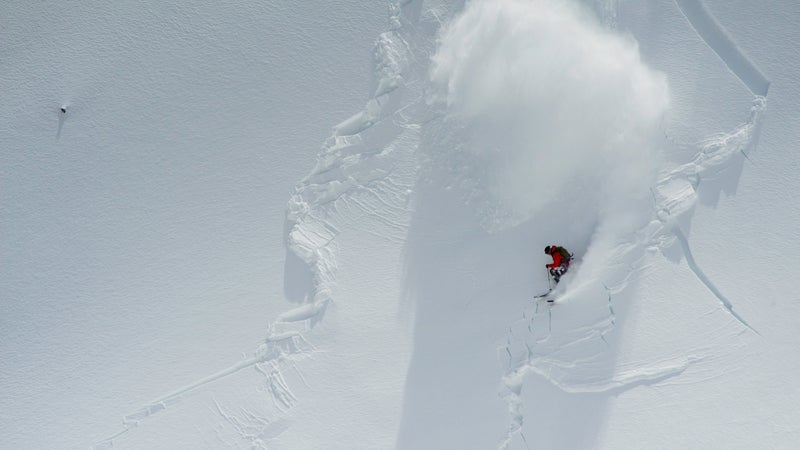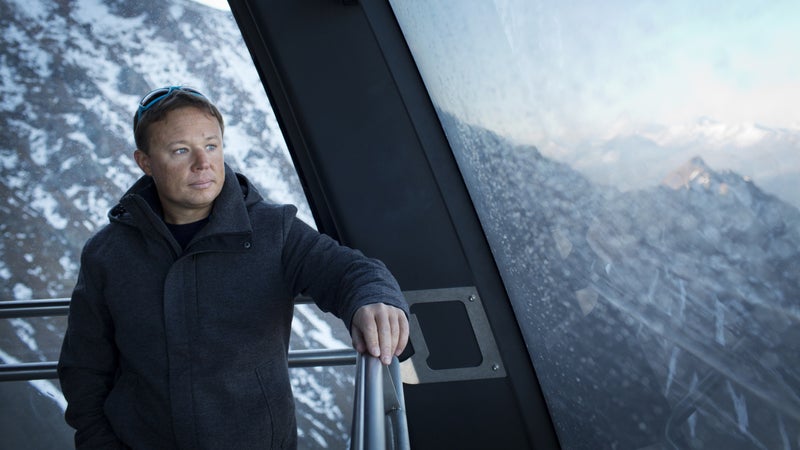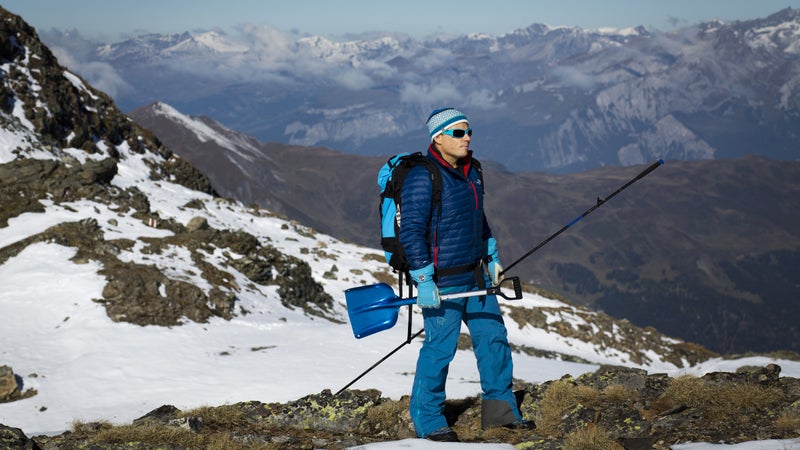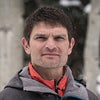Avalanche Rescue Needs a Revolutionary
Manuel Genswein has spent more than two decades burying himself alive and pushing shovels to their breaking point to determine the best ways to save snow-slide victims. His biggest challenge? Convincing the world’s most experienced rescuers that he’s right.
New perk: Easily find new routes and hidden gems, upcoming running events, and more near you. Your weekly Local Running Newsletter has everything you need to lace up! .
On January 7, 2008, Todd Weselake, a 23-year-old photographer living in Fernie, British Columbia, picked up two friends, Janina Kuzma and Ian Bezubiak, for a morning of backcountry skiing and snowboarding on the northern slopes of Mount Proctor, a 7,851-foot peak within view of town. The trio snowmobiled up a valley for 45 minutes, then climbed to an alpine ridge where they began their descent.
From the start, they knew to be careful: prolific early-season storms had left the snowpack layered and unpredictable. Though Weselake had snowboarded the same run the previous day without incident, he and his partners descended with caution. They stuck together on low-angle slopes, where they crossed tracks from the day before, then paused above a wide gully halfway down. When Bezubiak, who was 23 at the time, skied across the entry to test the snow stability, his weight triggered a two-foot-deep, twenty-foot-wide slab avalanche that raged downhill like water released from a dam. Suddenly on high alert, they moved into the trees, where slides are less common, and began making their way down the rest of the slope one at a time to limit their exposure.
Almost immediately, they felt a substantial collapse of snow beneath them. Kuzma, a 22-year-old professional freeskier from New Zealand, grabbed a fistful of branches. Bezubiak bear-hugged a tree. But Weselake disappeared as a torrent of snow swept him on his back headfirst down the slope.
Kuzma, who was left standing atop the two-foot-tall avalanche crown, leaped down to the bed surface, the layer left behind after a slide. She and Bezubiak switched their avalanche beacons to receive mode and began a frantic search of the debris field for Weselake. Kuzma’s device led her 1,150 feet to the bottom of the slide path, where the reading indicated that they were within a few feet of him. Bezubiak performed a more precise search to pinpoint Weselake’s location, then Kuzma drove her probe into the snow and hit him almost immediately. They whipped out their shovels for the hardest, most time-consuming phase of any rescue: digging. They knew Weselake was buried six feet deep and that his chances of survival were falling fast.

Instead of using the traditional method to excavate an avalanche victim—digging vertically into the snow along the path of the probe—Bezubiak and Kuzma employed a new technique they’d learned at a three-day course in Fernie less than a month earlier. It was called the V-shaped conveyor method and was reputed to cut excavation time nearly in half. They started downhill of the probe by 1.5 times the burial depth and dug into the snow horizontally instead of vertically, thereby limiting the risk that they’d collapse Weselake’s air pocket. Kuzma started at the front, chopping the hard debris into movable chunks, which Bezubiak then paddled away, as if he was kayaking, which widened the tunnel. When Kuzma got tired, they switched places.
Nearly 23 minutes after the avalanche occurred, they reached Weselake, who was unconscious and laboring through sporadic, shallow breaths. Bezubiak unclipped Weselake’s camera to relieve the pressure on his chest, and a few minutes later he began mumbling. Fifteen minutes after that, he could move. The group eventually evacuated under their own power.
In the days that followed, word spread through the Fernie area about the miraculous rescue. Weselake’s survival chances, based on how long he had been buried, were roughly 25 percent. If he had remained under the snow for ten minutes longer, those odds would have plummeted to 8 percent.
“We realized that their shoveling had made the difference,” says Duncan Maisels, a British Army officer turned ski guide who taught Bezubiak and Kuzma the V-shaped conveyor method. “It was like, ‘Oh, my God. The technique really worked.’ ”
Three months later, Weselake sent an e-mail to a Swiss avalanche researcher named Manuel Genswein, who conceived and developed the conveyor method the previous winter and has included it as part of an international standard he’s now proposing to the global rescue community. Genswein taught the procedure to Maisels and Weselake at a preseason safety clinic. Maisels later taught it to Kuzma and Bezubiak.
“My friends used the new technique,” Weselake wrote to Genswein. “I am sure that this saved my life.”
The V-shaped conveyor method is just one of Genswein’s many contributions to avalanche safety. He has helped design four beacons, including Mammut’s bestselling , and a revolutionary long-antenna transceiver that tripled the search range for aerial rescuers. No expert in the field exerts more influence on a global scale than Genswein, who works as a one-man institute based in Lenzerheide, Switzerland, and travels six months out of the year teaching avalanche courses in 26 countries and five languages. He almost exclusively trains other instructors, be they senior guides at heli-ski operations in North America, professional rescuers in the Alps, or mountain soldiers in the Norwegian, Dutch, Swedish, Austrian, and Indian armies.
“There’s nobody else in the world who’s done what Manuel has done,” says Bruce Tremper, the longtime director of the and one of the field’s most respected voices.

When he’s not teaching, Genswein, 41, researches ways to optimize every facet of the rescue process, challenging decades-old techniques in an unapologetic manner that has made him arguably the most polarizing figure in alpine rescue. If you are one of the approximately 900 attendees at the , a biannual conference that brings together the avalanche world’s brightest minds and ideas, or the roughly 400 elite rescuers who attend the annual congress of the (ICAR), where pros share new research and debate best practices, chances are you’ve seen Genswein engage in heated discussions with other experts over technique or technology.
In 2007 and 2008, he carried out an infamous field test that revealed many of the most expensive rescue shovels to be flimsy tools, dumped on consumers to keep profits churning. After the results were published in the Austrian magazine , Genswein says he received a phone call from an unidentified number. The voice on the other end told him in German that his shovel test—conducted under the umbrella of the —had made him a marked man. “You won’t live to see the spring,” the caller said.
No one ever tried to kill Genswein, as far as he knows, but the threat underscored the ruthless competition and business principles in the avalanche-safety industry, particularly at that time. Genswein, an independent consultant in a field dominated by government institutions and powerful manufacturers—some of which he has worked for on a freelance basis—still claims neutrality, for better or worse.
“I respect the fact that he’s an equal-opportunity destroyer,” says Jake Hutchinson, a former vice president of , in Utah, and lead instructor with the . “He will stand up in front of a crowd and call out everybody on their B.S. equally.”
The voice on the other end told him that his shovel test—conducted under the umbrella of the Austrian Alpine Club—had made him a marked man. “You won’t live to see the spring,” the caller said.
Others maintain that his affiliation with brands like Mammut and ABS—for the latter, he designed a wireless group-deployment airbag system, useful if several people are swept away by a slide at once—make impartial research impossible. “Manuel always says that he’s an independent guy, but in fact he is not,” says Marcus Peterson, the former general manager of , a major beacon manufacturer. “He’s been a bomb thrower for Mammut forever.”
His rivals’ feelings notwithstanding, lately Genswein has been trying to do something through ICAR that has never been done before: establish a set of standards covering every aspect of avalanche rescue. While snow-safety professionals have spent the past decade standardizing everything from the danger scale used in morning forecasts (low, moderate, considerable, and so on) to how accident reports are presented online, avalanche rescue remains a snake pit of opinions and local tradition. “Everybody thinks their way is the best,” says Dan Hourihan, a longtime ICAR delegate from the U.S. “ ‘We do it this way because this is the way Fritz did it.’ Well, where’s Fritz? ‘He’s dead.’ ”
For Genswein to establish a global standard, he needs his protocols to be endorsed by both the ICAR avalanche commission and the assembly of delegates, a notoriously political group comprised of member organizations from nearly 40 countries, including the U.S. To do that, he put together an ICAR working group that is examining all facets of avalanche rescue to determine which methods are superior. The list includes plenty of Genswein’s research-driven developments, including the V-shaped conveyor; the “slalom probing” search approach, used to locate avalanche victims not wearing beacons; and a larger search-strip width for beacon-assisted rescues than is currently taught in some countries. The point, Genswein explains, is not to force his ideas on everyone else but to create a set of proven strategies.
Indeed, if ICAR officially recommends his protocols to rescuers and instructors around the world, that could end up costing Genswein business. As a condition of his proposal, he has agreed to make his teaching materials publicly available. Still, Genswein thinks demand for his classes will continue. “Most recognize that the original is still better than the karaoke singer,” he says.
On a bluebird day in late March, I picked up Genswein for a ski tour around Quandary Peak, a 14,265-foot mountain near Breckenridge, Colorado. Though he visits the U.S. only two or three times a year, Genswein had been in Silverton and Durango to teach avalanche rescue. He had then traveled north to Breckenridge to train Flight for Life helicopter pilots on the use of search devices, which help locate lost or buried subjects via reflectors sewn into their gear.
We met photographer Liam Doran at the trailhead and began skinning up an old mining road. I presumed that Genswein would look like one of his students—an alpha male, built like an old-growth spruce. But he’s more like a well-packed snowball: five-foot-three, round head, stubby arms, and small hands. Some of his contemporaries refer to him as a Swiss gnome, but his paunch belies his climbing and backcountry abilities. He skis 70 days a year, he says, and you get the feeling that it’s not nearly enough for him.
We stopped at a gate before entering the more open and exposed valley, with walls of rock and snow towering above us on three sides. Genswein took out his Pulse beacon to make sure it detected ours.
“Why do you use a Pulse?” I asked.
“Because I developed it,” he said.

When he saw that I was wearing my beacon around my trunk, uncovered, he recommended that I put it in my sewn pants pocket, with the screen facing inward. When I asked why, he said that he had studied the entire database of Swiss avalanche accidents, dating back decades, and found zero cases where the victim had lost his pants, then died of asphyxiation.
Genswein’s breadth of knowledge and influence are even more unlikely when you consider that he has never been a professional rescuer. (He has, however, recovered three bodies, including one in 2001 that was buried for three months before the local rescue team summoned Genswein to help them find it.) The son of a clarinet-soloist mother and a doctor father, Genswein has an assertive approach and a high-pitched, almost cartoonish voice that initially invited impersonation rather than respect. “He didn’t fit in,” says Dale Atkins, a longtime avalanche-rescue specialist in Colorado. “A lot of rescuers were like, ‘Who is this guy saying we should be doing our job differently?’ ”
Genswein, who began backcountry skiing when he was five, broke ground as a researcher during mandatory service in the Swiss army, when he realized that his beacon didn’t perform the same way every time he searched for a deep burial. He figured out the problem (users were positioning their beacons incorrectly), wrote a paper that was published by the , and started fielding requests to teach courses abroad. He was 19.
As Genswein taught, his reputation spread. He worked with Swiss avalanche gurus Jürg Schweizer, head of the , and Werner Munter, a white-bearded guide known as the Avalanche Pope. His willingness to translate discussions into multiple languages gave him a voice at ICAR meetings. Owing to his electrical-engineering background—he apprenticed when he was a teenager and can troubleshoot virtually any rescue-related device—the company that developed Mammut’s beacons hired him to design what would become the Pulse, the first transceiver capable of detecting a victim’s vital signs under the snow. They tested the device, which uses a highly sensitive accelerometer to capture muscle movement in the heart, by burying Genswein 25 times in up to six feet of snow. He stayed in place for an hour and 40 minutes per burial, breathing with an . Genswein insisted that the Pulse, released in 2006, be equipped with an older analog function to deal with the most baffling problem in avalanche rescue: multiple burials in close proximity, which introduce signal overlaps that can be unscrambled only by changing the search beacon’s angle and listening for deviations in tone.
According to hardware-division chief Andres Lietha, Mammut’s executives hoped that they might sell 60,000 Pulses over the device’s lifespan. Instead, it has become one of the bestselling beacons on the market.
I’m setting a skin track above a stand of trees when Genswein suddenly asks me to stop. Despite the spring conditions, the snowpack has not consolidated into an isothermal structure, which is more uniform and predictable, and I got lazy with my route while moving across a small open slope.
“Don’t take this as a personal criticism,” Genswein says, “but if you would have made a switchback there, then come up right below these rocks—do you see that?—then we stay totally on top of this slope.”
He’s right. But I expected more venom. Among the traits Genswein is known for is his complete disregard for tact when evaluating another’s shoddy performance. He attributes this trait to his Swiss upbringing. Kevin Christakos, a senior heli guide at , which has hired Genswein to train its guides since 1999, remembers how his attempt to translate Genswein’s diction to “the redneck level” was received. “At one point he said to me, ‘You know, Kevin, you really shouldn’t teach anyone anything about anything,’ ” Christakos says. Another time, when Christakos told Genswein he didn’t believe one of Genswein’s search strategies worked, Genswein started poking the six-foot-five guide in the chest. “It works!” he screeched. “You’re just not applying it correctly!”
“Everybody thinks their way is the best,” says Dan Hourihan, a longtime avalanche rescuer from Alaska. “ ‘We do it this way because this is the way Fritz did it.’ Well, where’s Fritz? ‘He’s dead.’ ”
Genswein’s daily teaching rate starts at $600 in North America and $800 for foreign militaries. He invests much of his income in research and says he always aims to prove a theory beyond any quantitative doubt, since he knows his critics will try to debunk it. To test his V-shaped conveyor shoveling method, for instance, he offered participants free lodging and food, as well as a multi-day, high-level avalanche course, in exchange for hard shoveling four or five times a day while he timed them and filmed their facial expressions to see when they got tired. The test cost him $35,000, but the results were eye–opening: participants were able to remove nearly a third more snow per shoveler per minute, and rescue times were cut in half for victims buried in three feet of snow.
For the most part, those who once dismissed him at least listen now, though holdouts remain. Some of Genswein’s stiffest resistance, ironically, is found in his home country. For years, he says, one of his friends at Alpine Rescue Switzerland forwarded him internal memos in which a senior official repeatedly made it clear that under no circumstances was anyone to hire Genswein to teach. “They viewed me as a predator,” Genswein says, adding softly, “It hurt very much that they so excluded me.”
Bruce Edgerly, vice president of Colorado-based and a key player in the marketing-fueled beacon wars of the 1990s and early 2000s, once referred to Genswein in a since deleted blog post as “the Swiss avalanche rescue führer.” Edgerly helped develop a competing shoveling technique to Genswein’s V-shaped conveyor and downplays the multiple-burial search capabilities of his beacons. He claims Genswein “manipulates his numbers to meet his own objective, which is to sell high-level avalanche courses to professionals.” When asked why he has taken four of Genswein’s courses, Edgerly replied, “To make myself aware of his information.”
Whether there are enough critics to block the protocols from being endorsed by ICAR as the global standard remains to be seen. Genswein knows that the process is political and that bureaucracy slows almost every decision to a crawl. Patience is key. “Too much pressure can be counterproductive,” he says. He pauses, then adds, “Too much Manuel Genswein can be counterproductive.”
The late-March sun bakes our cheeks as we crest a ridge below the north face of Quandary Peak. The snow looks wind scoured and crusty in the chute I’d hoped to ski, so Genswein, Doran, and I scan the upper basin for an alternative. We decide to skin toward the east face of Fletcher Mountain, a 13,951-foot pyramid at the head of the valley.
Genswein, normally swift on skins, is slowed today by a fever and back pain, the latter from a paragliding accident 21 years ago in Chamonix, France, that fractured three vertebrae and almost paralyzed him. Doran and I push ahead to inspect a north couloir that appears to be in pristine condition, with six inches of dry powder overlaying a firm base. Genswein urges us to climb and ski it while he waits below. “Go now!” he shouts. As much as we want to, it doesn’t feel right to separate the group, so instead we strip off our skins and prepare to ski an open bowl just below the couloir.
Later, Genswein will bring up ski touring’s fatality rate—1 in 100,000 on a slope with minimal risk—and detail how those odds rise or fall with each decision you make. “This is one of the hard things in this field,” he says, suddenly animated. “Because the statistical likelihood to get caught is so low, there are accidents that you look at and think, How stupid, how could you imagine to ski this slope in these conditions?”
Then, just as quickly, his voice softens almost to a whisper. “But there are other accidents where you look at the map and you look at the conditions and you talk to the survivors, and you realize, here, I probably would have gone as well.”
As I stand atop the run that will supply today’s adrenaline fix—and double our perceived fatality rate to 1 in 50,000, due to the steeper pitch—I watch Genswein link perfect S-turns through the powder below, tight and uniform to the final arc. Then I push off myself, floating downhill with a joy born of gravity and freedom and, if I’m being honest, the knowledge that Genswein is standing at the bottom, just in case.
Devon O’Neil cowrote , about skier Rainer Hertrich.


